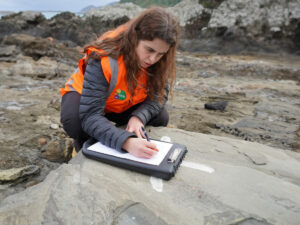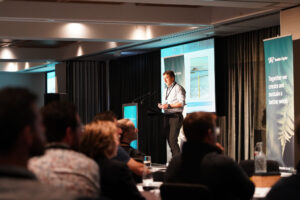Climate finance is crucial, as significant financial resources are needed for reducing emissions and adapting to the adverse impacts of the climate crisis. The outcome of the negotiations at COP26 in Glasgow include commitments on increasing the volume of climate finance for developing countries and the establishment of a carbon market.
At COP15, in Copenhagen, developed nations made a pledge to provide US$100 billion per year in public and private climate finance to developing countries by 2020. Climate finance is defined as the financing for mitigation and adaptation actions that will address climate change. This promised financing is yet to be provided, which presented an unresolved issue at COP26. Based on recent estimates from the OECD, the majority of the financing delivered (US$80 billion in 2019) was directed towards mitigation action.
The Glasgow Climate Pact, adopted at COP26, notes there is “deep regret” that the US$100 billion climate finance goal has not been met, with developed countries urged to fully deliver through to 2025. Last month, to help meet this commitment, the New Zealand Government quadrupled its climate financing to $NZ1.3 billion over the next four years, with most of this allocated to the Pacific.
There were also discussions at COP26 on the post-2025 climate finance target, which will require a substantial scaling up of financing to support climate action. This will involve the provision of financing for “loss and damage”, the financial support for the unavoidable impacts of climate change. Achieving progress on loss and damage was a key priority for Pacific governments at COP26, but this was not addressed in Glasgow and has been pushed back to next year.
The Glasgow Climate Pact included a pledge from developed countries to “at least double” adaptation finance between 2019 and 2025. To meet the needs of Pacific Island Countries, this should be in the form of grants (rather than loans) and also include support to strengthen access to climate finance. Governments across the Pacific face challenges meeting the complex access requirements of climate funds, and this is compounded by institutional and human resource capacity constraints.
Tonkin + Taylor has supported Pacific Island Countries with accessing and allocating climate finance, including projects on assessing climate and disaster risks and designing interventions for achieving climate action. Currently, Tonkin + Taylor is working with development partners, such as the United Nations Development Programme, Asian Development Bank, and World Bank, to design bankable climate adaptation projects in Pacific countries. Tonkin + Taylor is also presently working with the Commonwealth Secretariat on completing assessments and trainings for the Fiji, Solomon Islands and Vanuatu governments on using satellite remote sensing data to strengthen access to climate finance. In 2019, moreover, we led the development of the Green Climate Fund Country Programme for Papua New Guinea, which facilitates access to climate finance and provides a list of climate change projects to be funded.
The negotiations on Article 6 of the Paris Agreement were also completed in Glasgow. Article 6 was the last part of the Paris Rulebook to be agreed, and provides the rules for carbon markets and other forms of international cooperation. Article 6 includes the technical rules for managing the development of a global carbon market and the transfer of offsets between countries. In the New Zealand Government’s Nationally Determined Contribution, its pledge to cut emissions by 2030, it is proposed that two-thirds of the reduction could come from offsets. This reliance on offsets highlights the importance of having a global governance regime to ensure that double counting, which could lead to increased emissions, does not take place.
Lastly, private sector financing was a major focus of COP26. This included the use of mechanisms such as the Task Force on Climate-Related Financial Disclosures (TCFD), for greening private investment flows and managing financial instability that could arise from the climate crisis. Private sector financial institutions have over $US 130 trillion under management and directing this financing to climate action is crucial. Financial institutions at COP26 committed to assuming a “fair share” of the effort to wean the world off fossil fuels, but significant work is needed. This includes designing bankable projects that the private sector can finance, achieving fossil-fuel divestment, and designing policies and regulations to ensure meaningful private sector engagement can occur.
Without further progress on climate finance, COP26 will not be a turning point in the fight against climate change. Concrete actions are needed, not just pledges and promises. Tonkin + Taylor can help its clients with understanding the issues surrounding climate finance, completing adaptation and mitigation planning for allocating these resources, and designing and implementing the projects that are needed for spending this money.























